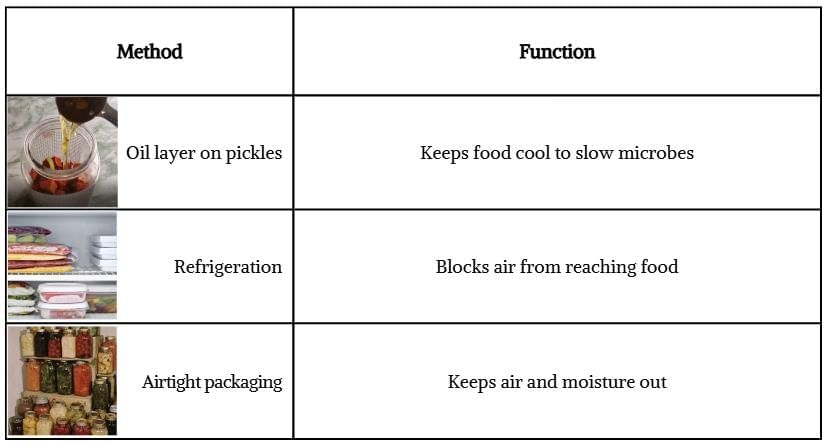Unit Test: The Mystery of Food | Our Wondrous World Class 5 - New NCERT PDF Download
Time: 45 Minutes
M.M.: 20
Attempt all questions.
Question numbers 1 to 6 carry 1 mark each.
Question numbers 7 to 9 carry 3 marks each.
Question number 10 carries 5 marks.
Q1. Which tiny living things cause coloured patches (mould) on spoiled food like bread or uttapam?
(a) Dust particles
(b) Microbes
(c) Vitamins
(d) Minerals
Q2. Fill in the blanks:
Microbes grow faster on food when there is enough ______, ______, and suitable ________.
Q3. True or False:
Keeping food in the refrigerator slows down the growth of microbes.
Q4. Name the method in which food like chillies is kept in the sun to remove water and prevent spoilage.
Q5. Match the following:

Q6. Which of these foods generally does NOT need refrigeration because water has been removed?
(a) Milk
(b) Butter
(c) Ghee
(d) Fresh curd
Q7. Could you list any three food preservation methods from the chapter and briefly explain how each works?
Q8. Why do pickles stay good longer than a slice of bread left outside? Give three reasons linked to conditions needed by microbes.
Q9. Aditya had indigestion after eating fair food. Suggest three safe practices to prevent and manage indigestion using ideas from the chapter.
Q10. Disha wants to explain how idlis become soft and how to keep the batter safe.
(a) Draw and label a simple flow diagram. (b) Explain in 3–4 points how good microbes help make idlis soft.
(b) Explain in 3–4 points how good microbes help make idlis soft.
(c) Write one safe storage tip for idli batter before cooking.
Find Solutions for the Unit Test- Here
|
11 videos|224 docs|10 tests
|
FAQs on Unit Test: The Mystery of Food - Our Wondrous World Class 5 - New NCERT
| 1. What are the different types of food and their significance in our diet? |  |
| 2. How does food contribute to our overall health and wellness? |  |
| 3. What are the main sources of nutrients found in food? |  |
| 4. Why is it important to understand food labels and nutritional information? |  |
| 5. How does cooking affect the nutritional value of food? |  |
















